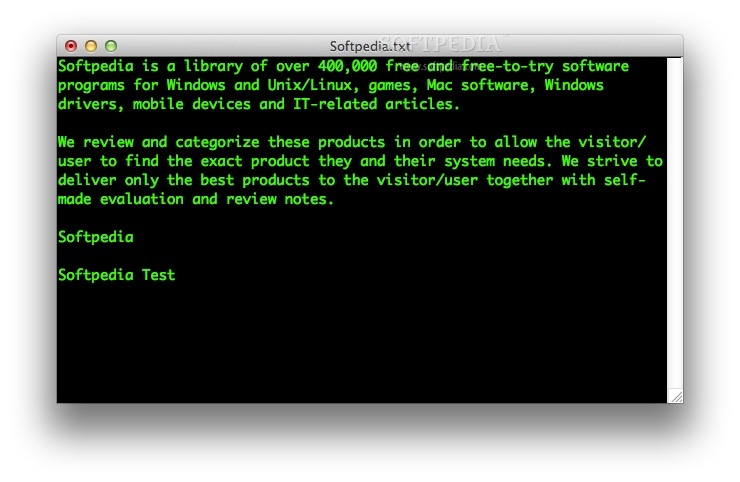

NOTE: To select a different location for the text file, select a folder from the Where drop-down list, or click the down arrow button to the right of the Save As box to access the full Save As dialog box, which we show next.Ĭlick the Save button to save the document as a plain text file.

txt extension, even if you don’t enter it in the Save As box. This will ensure the plain text file has the. Then, check the If no extension is provided, use “.txt” box. Step 6: On the Save As dialog box, enter a name for the text file in the Save As box. Then, go to File > Save, or press “Command+S”. Back in TextEdit, create a new document, convert it to plain text mode, and type some text. Step 5: Now, you can save your document as a plain text (.txt) file. Step 4: Click the X button in the upper-left corner of the Preferences dialog box to close it. Then, select Unicode (UTF-8) from the Saving files drop-down list in the Plain Text File Encoding section. Step 3: First, check the Add “.txt” extension to plain text files box. Step 2: On the Preferences dialog box, click the Open and Save tab. Step 1: Open TextEdit, if it’s not open already, and go to TextEdit > Preferences. To do so, you need to tweak some settings in TextEdit’s preferences. Once you’ve converted your document to plain text mode, you can save your document as a plain text file with the.
#Plain text editor for mac how to#
RELATED : How To Change the Login Password on Your Mac Save Files In Plain Text You may want to make a backup of the original rich text document. So, again make sure you really want to convert a rich text document to plain text. However, if the document was originally a rich text document, you will not get back the original formatting. Step 4: You can convert a plain text document to a rich text document by going to Format > Make Rich Text while the document is open. In plain text mode, you can still change the font and size using the Format menu. All the formatting is removed and the text is converted to the Menlo font, size 11. Step 3: The formatting toolbar and ruler are removed from the TextEdit window. NOTE: If you haven’t applied any formatting to your text, such as bold, italic, underline, etc., you won’t see this confirmation dialog box. If you’re sure, click OK to convert your document to plain text mode. So, be sure you want to convert your document to text. Converting your document to plain text removes all formatting, images, attachments, and document properties. Step 2: A confirmation dialog box displays. To do so, open your rich text document in TextEdit and go to Format > Make Plain Text. Step 1: You can easily convert any TextEdit rich text document to plain text mode at any time.


The following image shows the only formats available while in rich text mode. When TextEdit is in rich text mode, you cannot save a document as a plain text file. Convert Text To Plain Text Modeīy default, TextEdit opens a new document in rich text mode with the formatting toolbar and the ruler available. Today we’ll show you how to convert to a TextEdit document to plain text mode, save files as plain text, and use plain text mode by default in Text Edit. It can be used to remove formatting from copied text, work with code, or just jot down and save a quick note. However, TextEdit can also serve as a simple text editor like Notepad in Windows. In TextEdit, you can apply various fonts to your text, change the size and color of text, and apply another formatting like centering, line spacing, and bulleted lists. TextEdit was designed to be a rich text editor. Plain text mode is not the default mode in TextEdit on your Mac.


 0 kommentar(er)
0 kommentar(er)
